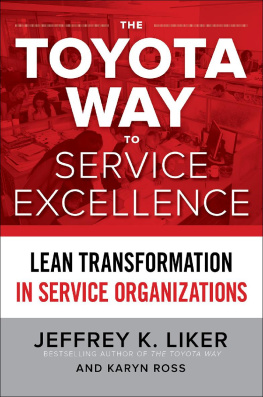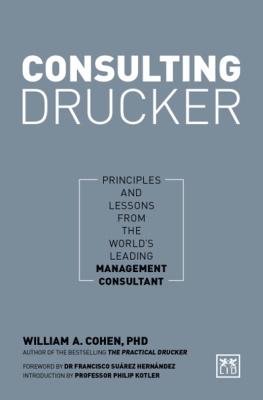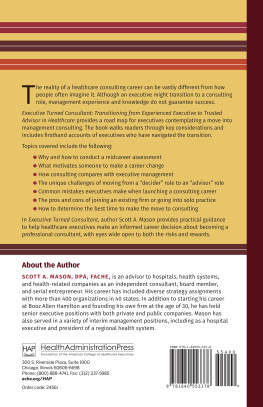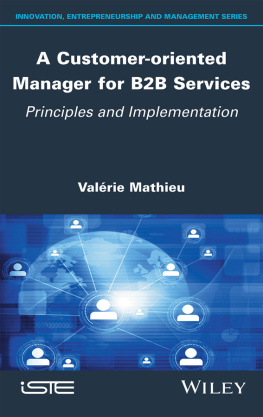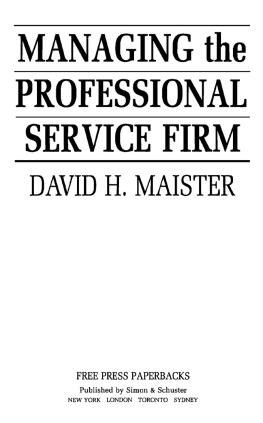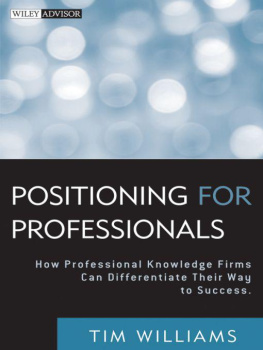THE SEVEN PRINCIPLES
OF
PROFESSIONAL SERVICES
A field guide for successfully walking
the consulting tightrope
SHANE ANASTASI
W W W . P S P R I N C I P L E S . C O M
Copyright 2014 Shane Anastasi
Published by PS Principles
www.psprinciples.com

This publication is designed to provide accurate and authoritative information in regard to the subject matter covered. It is sold with the understanding that the publisher and author are not engaged in rendering legal or accounting services. If legal advice or other expert assistance is required, the services of a competent professional should be sought.
All rights reserved. No part of this publication may be reproduced, distributed, or transmitted in any form or by any means, including photocopying, recording, or other electronic or mechanical methods, without the prior written permission of the publisher, except in the case of brief quotations embodied in critical reviews and certain other noncommercial uses permitted by copyright law.
Front Cover Image Businessman in equilibrium on a rope over a cityscape Copyright Ollyy, used under license from Shutterstock.com
Paperback Edition Registered with
Library of Congress Control Number: 2014958202
PS Principles, Chicago IL
Publisher: PS Principles
Editor: Thomas McGrath
Cover Designer: Shane Anastasi
1. Business 2. Education
First Kindle Edition: November 20 th , 2014
To Mary, Audrey, Tess and James:It is your amazing love and support that gets me through each day.Without it, Id be lost.
- Shane
CONTENTS
ACKNOWLEDGEMENTS
I would like to warmly acknowledge the help of my colleagues who reviewed this text and acted as my own group of trusted advisors. Some of them even contributed their own experiences so that others could learn from them. It is your stories that bring the principles to life. It was a pleasure working with you, and it would be a privilege to do so again. Thank you.
| Godard Abel | CEO SteelBrick and Co-founder G2 Crowd |
| Devang Bhavsar | VP of Professional Services, PersonifyScrum Master |
| Craig Broadbent | CEO Stonebridge Systems |
| Matt Gorniak | CRO at SteelBrick & Director at G2 Crowd |
| Nick Jones | Director of Global Services at OpenText |
| Michael Martin | Senior Enterprise Architect at CirrusCPQ |
| Gavin McCloskey | Digital Media Architect at Telstra Australia |
| John Pora | VP of Professional Services at Aria SystemsProject Management Professional |
| Erich Rusch | Co-Founder of CirrusCPQ and;CEO and Co-Founder of Sprockit |
| Jeffrey Wells | IBM Professional Services ExecutiveCertified PMP & Muscle Car Enthusiast |
FOREWORD
Godard Abel
Serial Entrepreneur (BigMachines, SteelBrick, G2Crowd)
For 20 years, I have either worked in or led many different professional services organizations. The principles defined in this book remind me of many of the lessons I learned at McKinsey, where I worked after being hired as a management consultant in 1994, fresh out of engineering school at MIT. Like many junior consultants, I was highly motivated as a problem-solver, but I lacked an understanding of our clients organizational dynamics, and I did not know how to manage their expectations. After three years of learning at McKinsey, I returned to business school at Stanford, which led me down the route of becoming an enterprise software entrepreneur. From this vantage point, I have seen firsthand the impact a well-run professional services team has on the success of a company and its clients.
I first got to know Shane when I was the CEO of BigMachines, which was fast becoming the leading provider of cloud-based CPQ (configure, price, quote) software. After starting the company in 2000 and spending a few years struggling to find the right product-market fit, we had finally entered the tornado of rapid growth. BigMachines had become the worlds leading cloud CPQ company, and it was becoming obvious that the biggest inhibitor to continued growth was our ability to implement our own software into enterprise IT environments.
When Shane joined us, we were close to doubling our yearly bookings for four consecutive years, and we were facing substantial challenges in scaling our professional services to keep up with the accelerating demand. We were starting to win many large enterprise accounts that required extensive implementation services. This kind of complex implementation required a different level of service provision than what we had been successfully delivering to smaller mid-market companies.
We had hired many talented and committed young professional services consultants with tremendous technical aptitude and product knowledge. Unfortunately, they also lacked experience in communicating with enterprise customers during their large, high-pressured and complex projects. Our team was becoming strained, and we were fighting many fires across a rapidly growing portfolio of hundreds of new implementation and add-on projects. Many of the projects were not getting done on schedule, which was leading to an ever-growing backlog of open projects that were in the process of escalating. Our customers were counting on us to automate their mission-critical quoting and ordering processes, and thus our project delays often led to difficult conversations with stressed and unhappy customers. Our growing portfolio of escalating projects was inhibiting the growth of my software company.
To complicate matters, a substantial re-capitalization of $80M in new capital from new investors shifted our professional services objectives. This injection of new capital also came with new expectations, which included the desire for our services team to begin generating profit. Our increasing escalations had forced our professional services margin into the negative and this began to threaten our continued growth. We had to widen our focus from just services scalability so that it now included the additive goal of driving substantial services margins despite a backlog of unprofitable projects.
By being straightforward with our clients in a manner that earned their trust and respect, Shane enabled us to weather this storm by staying calm amidst the many fires and by always being straightforward with our clients. On numerous occasions, Shane had many difficult conversations with customers, and he frequently helped to reset their expectations toward a mutual vision of what done should look like. He then had to convince each customer that moving to this new vision of done was a good outcome despite the over inflated expectations they currently possessed. More impressively, Shane accomplished all this while simultaneously teaching our young professional service managers and team members the framework of Shane-isms spelled out in this book.
Under Shanes leadership, the services team regained control of the project portfolio, so that the company could continue to grow rapidly and profitably. BigMachines was ultimately acquired by Oracle in 2013, resulting in an excellent outcome for the investors. Clearly, Shanes influence helped shape this result.
Recently, I became CEO of another next generation CPQ company called SteelBrick. Our professional services team is now composed of many team members who were part of Shanes team at BigMachines, where they clearly learned these principles and matured as managers. Just the other day, I was in our conference room and witnessed our Director of Professional Services mentoring a newly hired consultant by spelling out the ABCs of professional services on a white-board. As you will read, this Director acquired this knowledge while working for Shane, and it is incredibly comforting for me to know that my current head of professional services has absorbed many of Shanes principles. I will always want my most senior professional services executive to embrace these principles and employ them to the benefit of my companies. Deploying such a concise and effective framework of principles provides me with the confidence that we are delivering the right balance of company and customer success.
Next page

